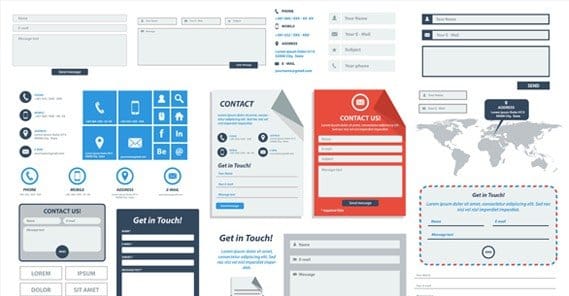15 Free Contact Form Scripts for Your Website

A contact form is a near-essential part of any site looking to do e-commerce today. If you don’t have a contact form, you rely on either email or a phone number for users to get in touch with you. With email, you never know if the user will go through the extra step of composing and sending a message. You also have to deal with multiple communications, as they very likely won’t provide all of the information you want to get from them.
Phone has fewer issues, but the issues it has are major. For one thing, who do you have answering your phone? If it’s a talented salesman, are they on call 24/7, or do they have business hours? Your website’s power comes from working all day, every day. If your sales funnel only works during business hours, the rest of your site does you no good half the time. If you’re outsourcing to a call center instead, you have the availability, but not the talented sales experience.
Thankfully, contact forms are easy to implement. You can find scripts to include them and paste those scripts onto your page easily enough.
I’ll go ahead and include a disclaimer here. Always make sure someone who understands code goes over any plugin or script you install. You don’t want to find out six months from now that the contact script you’re using is also sending information to a third party. It’s highly unlikely to happen, but you should be careful whenever possible.
The Simple
These are some of the simplest contact forms you can get. They’re basic boxes that the user fills out. When they submit, the information is sent your way.
- This CSS-Tricks Form is a simple contact form made using PHP for code and CSS for styling. You can apply all sorts of styling to it, to make it match the rest of your site. The PHP back-end means you need to be running a website on a server that uses PHP, but that’s rarely a problem. You can find a second version here, with added spam protection via reCaptcha.
- This Basic Email Form comes from Free Contact Form dot com, so you know it does what it says it does. It’s very simple, made up of HTML that’s basically editable in plaintext, it’s so easy. Just customize the code to include whatever fields you want. The PHP is a little more complex, but it’s easy enough to use.
- This Simple PHP Form is another incredibly simple version of the form. Coming from 123Contact Form dot com, you can go a little more advanced and use their form builder to customize the form. More form builders will come in section three.
- This Validated Form uses some JavaScript to validate the form information, making sure you never end up with forms submitted with fields missing. Just don’t try to require too many fields, or your users will give up and change their minds.
- This Form Site includes a number of variants on the simple contact form, to give you some ideas of what you might include. You can, of course, customize them on your own to your heart’s content.
The Complex
These forms are all a little more complex. They do advanced things, like pop up in lightboxes or hide in the sides of screens. They’re a little more complicated to run and troubleshoot, but the slickness of their design makes up for it.
- This Simple jQuery Form pops up a simple contact form in a lightbox, dimming the rest of the site. It’s good when you want your form to be as minimally disruptive as possible. It doesn’t have a lot of range of customization, however, unless you want to dig into the code yourself.
- This AJAX Form looks very simple, but it actually includes quite a bit of validation and additional tricks. If you’re not quite satisfied, you can poke around the site and find some more variations on the form, including some additional themes.
- This other AJAX Form lives in a small tab on the side of the screen, ready and available any time your users want to click on it to send you a message. With a little adaptation to the code, you can make it scroll with the user, so the contact button is always available no matter where they are on the page.
- This Fancy Form does everything from one menu. When you submit the form, it morphs into a confirmation message, without requiring a page refresh. This can be useful for a number of reasons.
- This Special Form is not free, but it does come with one advanced feature that is very much worth the money if you’re in business with a high volume of clients; CSV exporting. You can easily get a spreadsheet readout of the data from your submissions.
The Builders
Sometimes, the pre-made solutions you find online just don’t work for what you want. That’s when you need to turn to something that offers a service, rather than a pile of code. These services all allow you to create customized forms, and they export the code for you to paste onto your site.
- WuFoo is a simple form builder that allows you to make HTML forms that work as contact forms, surveys, invitations, registration pages and a host of other options. You can try for free, but building more advanced forms or having multiple users costs money.
- Spring.me, formerly known as Formspring, is a form builder that can be used by anyone, from an enterprise to a single entrepreneur. It works well with social media.
- Freedback is a graphical form constructor designed around simple HTML contact forms. There’s not a lot to it, but you don’t need a lot for a simple contact page.
- PHPForm is a database of options for creating a simple form in just three steps. First, pick a color scheme that most closely matches your site. You can change it later if you need to. Second, use their dozen options to design a form. Third, download and paste in your finished form.
- FormAssembly is a great creator with a two-week fee trial. They do contact forms, surveys, applications and even payment processing forms, with special emphasis on security.
 ContentPowered.com
ContentPowered.com




